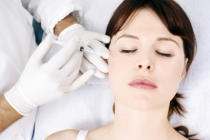Living with eczema can prove challenging at times. Not only are you suffering from itchy, red, inflamed and dry skin but it can often be aesthetically embarrassing. Eczema tends to reveal itself on different parts of the body depending on what age bracket you fall into.
Let’s take a closer look at what that looks like below
Infants
Rashes are more frequently found on the scalp and cheeks and have been known to bubble to the surface before seeping fluid.
Children 2 Years- Puberty
Rashes typically present themselves behind the creases on the elbows and knees. In addition it can spread to the: neck, ankles, wrists and the crease between the legs and buttocks.
Adults
Rashes can be found on the neck and face, especially around the eyes. They also can spread to the creases and folds of the limbs. Eczema tends to be more itchy for adults than children and cause extremely, scaly skin. Rashes are more prone to infections caused by bacteria including, Staphylococcus aureus.
Most people develop atopic dermatitis before the age of five. While many children grow out of their eczema, half of the adults who were previous sufferers of the condition are more prone to dry, itchy skin and other rash type symptoms. There is a hereditary predisposition linked to eczema, meaning, if one or both of your parents have the condition, it is likely you will suffer from it as well.
While atopic dermatitis is the most common form of this skin disorder, there are several other forms of eczema including:

Allergic Contact Dermatitis
is when your immune system recognizes something foreign that you have applied topically or had contact with on your skin that causes an allergic reaction.
Nummular Dermatitis
is characterized by it’s circular patches of irritated skin that can be itchy, scaly and excessively dry.
Seborrheic Dermatitis
more commonly found on the scalp and face and is characterized by it’s yellowish, oily patches of scaly skin.
Neurodermatitis
presents itself as scaly patches of skin on the head, wrist, forearms and lower legs. The itch is localized to the specified area much like the bite of an insect.
Dyshidriotic Dermatitis
presents in the form of blisters and affects the palm of the hands and soles of the feet.
Stasis Dermatitis
is associated with circulatory problems and presents itself on the lower legs of the body.
While there is no known cause to eczema there are several factors that attribute to outbreaks including environmental elements. Hormonal changes, stress and extreme temperature exposures or changes in hot and cold, have all been associated to making symptoms worsen.
Other Triggers of Eczema Flare ups include
Irritants
shampoos, sulfates, harsh soaps, detergents, oats and gluten (topically).
Microbes
certain types of fungi, viruses and bacteria including Staphylococcus aureus.
Allergens
pet dander, dandruff, molds, pollens and dust mites.
Foods
wheat, eggs, nuts, seeds, dairy and soy products. Sometimes gluten is a contributing factor but it is more typically associated to celiac disease. Understanding your condition is important for you to be able to manage and care for it properly. If you have not been properly diagnosed or seen a dermatologist about your dermatitis, it is imperative that you set up an appointment today. Your doctor will be able to do skin tests including allergen testing, help you identify your triggers and if needed, can prescribe you medications that will assist in clearing eczema out of your life.
Dr. Cheryl Lee Eberting is a board certified dermatologist and is a past fellow of the National Institutes of Health. She was one of the first dermatologists in the world to begin advocating the use of bleach baths for the treatment eczema.




